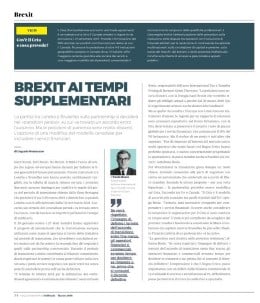-
Transactional advisory services
Find out more about the transactional advisory services of Grant Thornton Financial Advisory Services
-
Valuations
Find out more about the valuations services of Grant Thornton Financial Advisory Services
-
Mergers and acquisitions
Find out more about the merger and acquisition services of Grant Thornton Financial Advisory Services
-
Forensic and investigation services
Find out more about the forensic and investigation services of Grant Thornton Financial Advisory Services
-
Recovery & reorganisation
Find out more about the Recovery & reorganisation services of Grant Thornton Financial Advisory Services
-
Business risk services
Find out more about the business risk services of Grant Thornton Financial Advisory Services
-
Business consulting
Find out more about the business consulting services of Grant Thornton Financial Advisory Services
-
Capital market
Capital market
-
Corporate and business tax
Find out more about our corporate and business tax services.
-
Direct international tax
Find out more about our direct international tax services.
-
Global mobility services
Find out more about our global mobility services.
-
Indirect international tax
Find out more about our indirect international tax services.
-
Transfer pricing
Find out more about our transfer pricing services.
-
Litigation
Our lawyers and accountants can manage all defense measures provided not only by the Italian law, but also by EU regulations and conventions
-
Family business
Find out more about our Family business services.
-
Legal
The client can be assisted in every need and with the same care both on important operations or disputes and on simple matters

-
Back office outsourcing
Find out more about our Back office outsourcing services
-
Business process outsourcing
Find out more about our business process outsourcing services.
-
Compilation of financial statements
Find out more about our compilation of financial statements services.
-
Tax compliance
Find out more about our tax compliance services.
-
Electronic invoicing
Find out more about our electronic invoicing services
-
Electronic storage
Electronic storage is an archiving procedure that guarantees the legal validity of a digitally stored electronic document
-
Revaluation of corporate assets
Find out your civil and fiscal revaluation of tangible, intangible and financial assets
-
Human resources consulting
Find out more about our human resources consulting services.
-
Payroll
Find out more about our payroll services.
-
HR News
HR News the monthly information newsletter by Grant Thornton HR
-
Cybersecurity
GT Digital helps clients structure information security management internal functions, also through partially or totally outsourced functions
-
Agile and Programme Management
GT Digital provides support in the adoption and implementation of different portfolio management
-
Robotic Process Automation
Our “BOT Farm” can rely on digital workers able to help clients in routine activities, allowing employees to deal with more added-value activities
-
Data strategy and management
GT Digital can support clients in seizing the opportunities offered by Big Data, from the definition of strategies to the implementation of systems
-
Enterprise Resource Planning
We support clients in selecting the most appropriate ERP System according to their specific needs, helping them also understand licensing models
-
IT strategy
GT Digital supports clients in making strategic choices, identifying innovation opportunities, comparing themselves with competitors
-
IT service management
We can support with software selection and with the implementation of dedicated tools for the management of ICT processes
-
DORA and NIS 2
The entry into force of the DORA Regulation and NIS2 represents a major step towards the creation of a harmonised regulatory framework
The dispute between London and Brussels on their future partnership will be settled in the «transition period», on which an agreement needs to be found within the autumn. But the starting positions are very far apart. An option may be that of adjusting the Canadian model to include financial services. Paolo Besio analyses the situation in an interview with Focus Risparmio.
“The October 2018 deadline for the definition of the «withdrawal agreement» is extremely challenging” commented Paolo Besio, International Tax and Transfer Pricing Partner at Bernoni Grant Thornton. “Positions remain distant, with the hard Brexit fringe willing to reduce contractual commitments starting from 29 March 2019. London will have to face also domestic negotiations”.
The City is determined to maintain its role as global financial services centre, accounting for 10% of the British GDP. “In order to remain in the single market, many businesses based in the UK have already moved, or are planning to do so, to EU member States despite their higher taxation” declared Paolo Besio.
According to the latest proposals, the partnership could follow the Ceta model, i.e. the agreement in place between EU and Canada. “Ceta is the most advanced model agreement among those entered into by the EU”, explained Besio, “nonetheless it will have to be integrated to include financial services. Timing also needs to be taken into accounts: Ceta negotiations lasted over five years”.
London is willing to maintain the free movement of capital, but Brussels reasserted the impossibility of a partnership «à la carte». “The issue will be discussed in the next few weeks. If the commitment to define the terms of the transition agreement by the end of March will be respected, financial and commercial players will have time to decide whether or not to remain, before the divorce will be effective”. The impression is that the UK, an importing country with a trade balance deficit of £ 12.2 billion and a 3% inflation rate, cannot push it too far.


